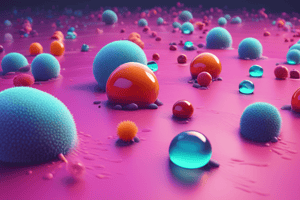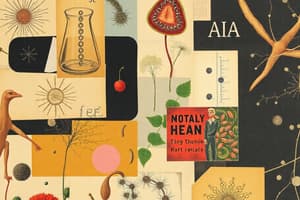Podcast
Questions and Answers
Which of the following is NOT a nutritional category of microorganisms?
Which of the following is NOT a nutritional category of microorganisms?
- Pathogen (correct)
- Heterotroph
- Autotroph
- Saprope
Which nutritional category of microorganisms obtains energy from the metabolic conversion of nutrients from other organisms?
Which nutritional category of microorganisms obtains energy from the metabolic conversion of nutrients from other organisms?
- Heterotroph (correct)
- Photoheterotroph
- Autotroph
- Saprope
Which type of culture media is used to grow, transport, and store microorganisms in the lab?
Which type of culture media is used to grow, transport, and store microorganisms in the lab?
- Liquid media
- Solid media
- Semi-solid media
- solid or liquid media (correct)
Which process involves the transport of necessary nutrients across the cell membrane of microorganisms with the use of energy?
Which process involves the transport of necessary nutrients across the cell membrane of microorganisms with the use of energy?
Which nutritional category of microorganisms utilizes sunlight as an energy source?
Which nutritional category of microorganisms utilizes sunlight as an energy source?
Flashcards are hidden until you start studying
Study Notes
Microorganism Nutrition
- Autotrophs are not a nutritional category of microorganisms, as they are organisms that produce their own food from inorganic substances.
Heterotrophs
- Obtain energy from the metabolic conversion of nutrients from other organisms.
Laboratory Tools
- Transport media is used to grow, transport, and store microorganisms in the lab.
Cellular Processes
- Active transport involves the transport of necessary nutrients across the cell membrane of microorganisms with the use of energy.
Phototrophs
- Utilize sunlight as an energy source.
Studying That Suits You
Use AI to generate personalized quizzes and flashcards to suit your learning preferences.




